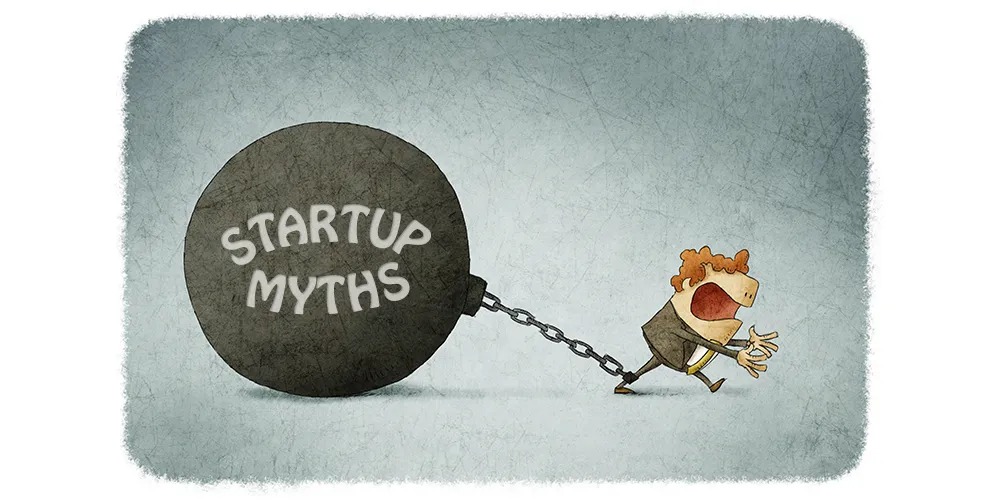Starting a business is exciting, challenging, and full of surprises. However, many aspiring entrepreneurs fall into the trap of believing startup myths that can limit their growth or set them up for failure.
In this article, we’ll bust 10 common startup myths and uncover the truth about what it really takes to build a successful business. Let’s dive in! 🔍💰
1. Myth: You Need a Million-Dollar Idea to Succeed 💡💰
🚫 Truth: Execution matters more than the idea.
Many people believe that only groundbreaking ideas lead to successful startups. In reality, success comes from solving real problems, executing well, and adapting to market needs.
📍 Example: Facebook wasn’t the first social media platform, and Google wasn’t the first search engine. They succeeded because they executed better than competitors.
✅ What to Do Instead: Focus on execution, customer feedback, and continuous improvement rather than waiting for a “perfect idea.”
2. Myth: You Need a Lot of Money to Start a Business 💸
🚫 Truth: Many successful startups begin with minimal capital.
While funding can help, many entrepreneurs start with small investments, bootstrap their way up, or use creative funding strategies.
📍 Example: Airbnb started with the founders renting out air mattresses in their apartment to make extra cash.
✅ What to Do Instead:
🔹 Start small and test your idea with minimal investment.
🔹 Use pre-orders, crowdfunding, or grants to fund your startup.
3. Myth: You Have to Quit Your Job to Start a Business 👔➡️🚀
🚫 Truth: Many successful entrepreneurs start their businesses while working full-time.
Quitting your job too early can put financial pressure on your startup, forcing you to make desperate decisions.
📍 Example: Brian Chesky (Airbnb) and Steve Wozniak (Apple) kept their jobs until their startups gained traction.
✅ What to Do Instead:
🔹 Start as a side hustle and grow gradually.
🔹 Once you gain momentum, transition to full-time entrepreneurship.
4. Myth: You Need to Raise Venture Capital to Succeed 💰🚀
🚫 Truth: Many successful startups never raise VC funding.
Venture capital can help scale a business, but it’s not necessary for success. In fact, some of the most profitable companies bootstrapped their way up.
📍 Example: Mailchimp, Basecamp, and Shopify grew without early VC funding.
✅ What to Do Instead:
🔹 Explore bootstrapping, crowdfunding, or angel investors.
🔹 Focus on profitability rather than chasing funding rounds.
5. Myth: If You Build It, Customers Will Come 🚪➡️💵
🚫 Truth: No product sells itself—marketing is key.
Even if you create an amazing product, people won’t find it unless you market it effectively.
📍 Example: Tesla, Apple, and Coca-Cola invest millions in branding and marketing despite having strong products.
✅ What to Do Instead:
🔹 Build a marketing strategy (SEO, social media, ads, partnerships).
🔹 Engage with your audience and create a strong brand presence.
6. Myth: You Must Be First to Market to Win 🏆
🚫 Truth: Being first doesn’t guarantee success—doing it better does.
Many first movers fail because they don’t execute well. Often, the second or third entrant dominates the market.
📍 Example: Google wasn’t the first search engine, and Facebook wasn’t the first social network—but they became market leaders.
✅ What to Do Instead:
🔹 Study competitors, learn from their mistakes, and improve.
🔹 Focus on execution, user experience, and branding.
7. Myth: More Features = Better Product 🔧
🚫 Truth: Customers care about solutions, not features.
Many startups try to pack too many features into their products, making them complicated and difficult to use.
📍 Example: The first iPhone (2007) had fewer features than competitors but won due to simplicity and user experience.
✅ What to Do Instead:
🔹 Focus on solving a problem, not adding features.
🔹 Launch a Minimum Viable Product (MVP) and improve based on user feedback.
8. Myth: Startups Must Grow Quickly or Fail 📈➡️💀
🚫 Truth: Sustainable growth is more important than rapid scaling.
Hypergrowth can lead to burnout, financial issues, and poor execution. Many successful companies grow slowly and steadily.
📍 Example: Amazon spent years reinvesting profits before dominating e-commerce.
✅ What to Do Instead:
🔹 Focus on consistent, sustainable growth.
🔹 Improve customer retention, not just rapid expansion.
9. Myth: You Need to Do Everything Yourself 🤹♂️
🚫 Truth: Delegation and teamwork are crucial for success.
Trying to do everything alone leads to burnout and inefficiency. Successful entrepreneurs build great teams and delegate tasks.
📍 Example: Jeff Bezos (Amazon) and Elon Musk (Tesla, SpaceX) didn’t build their companies alone—they hired the best teams.
✅ What to Do Instead:
🔹 Hire or partner with skilled people.
🔹 Focus on your strengths and delegate tasks outside your expertise.
10. Myth: Failure Means You Should Give Up ❌
🚫 Truth: Failure is part of success. Most successful entrepreneurs failed before they succeeded.
📍 Example:
🔹 Steve Jobs was fired from Apple before returning and making it a global success.
🔹 Walt Disney was rejected multiple times before creating Disneyland.
🔹 Jack Ma (Alibaba) was rejected by 30+ companies before building one of the largest e-commerce companies in the world.
✅ What to Do Instead:
🔹 Learn from failures and adapt your strategy.
🔹 View setbacks as stepping stones to success.
Conclusion: Success Comes from Action, Not Myths 🚀🎯
Believing startup myths can hold you back from achieving success. The truth is:
✅ Ideas don’t matter as much as execution.
✅ You don’t need VC funding to build a profitable business.
✅ Marketing, delegation, and patience are crucial for success.
✅ Failure is a learning experience, not an endpoint.
🚀 Want to start your own business? Take action, test ideas, and keep learning!


